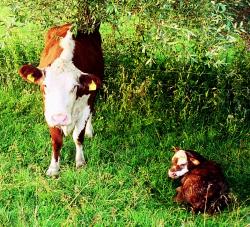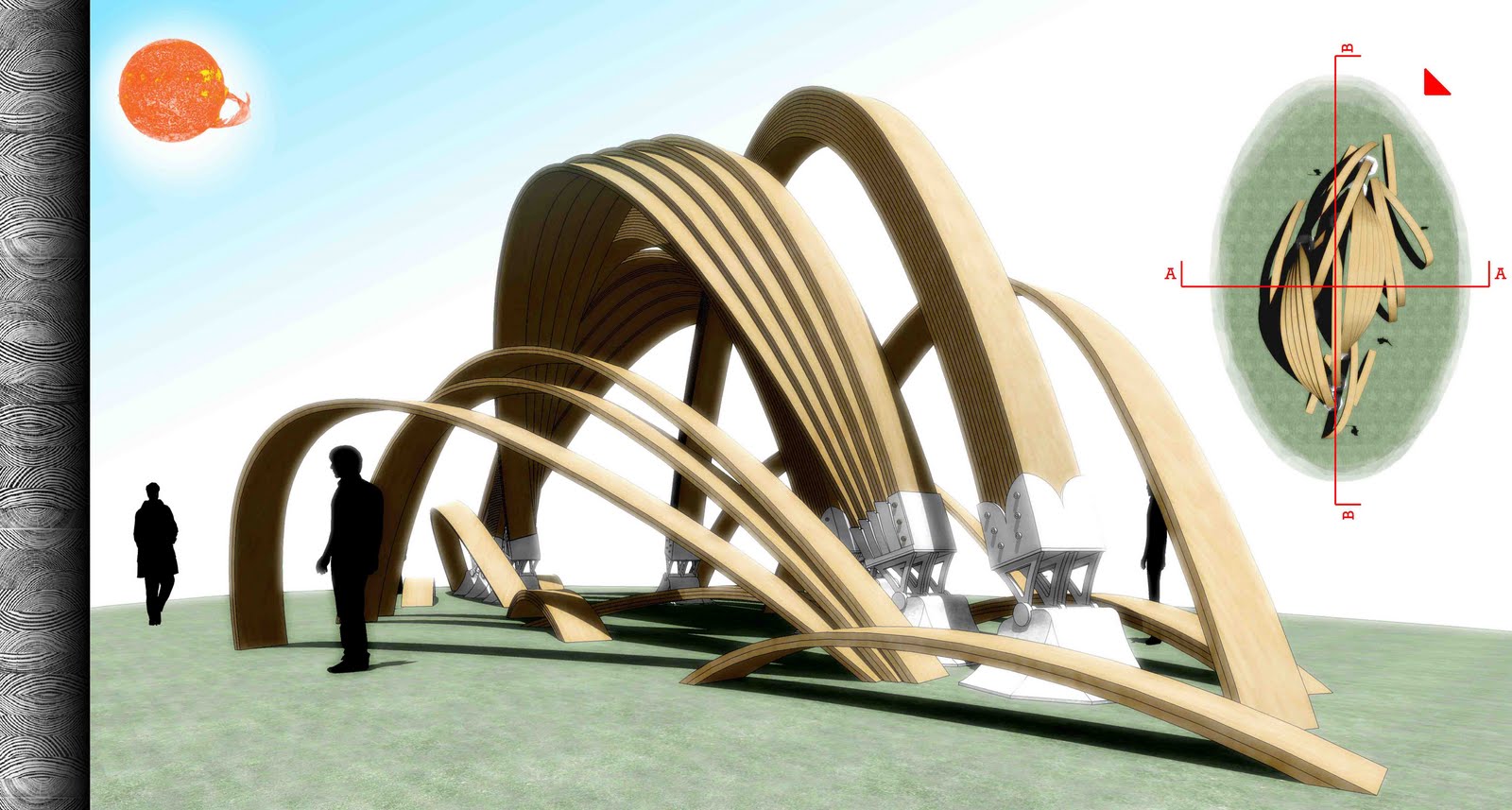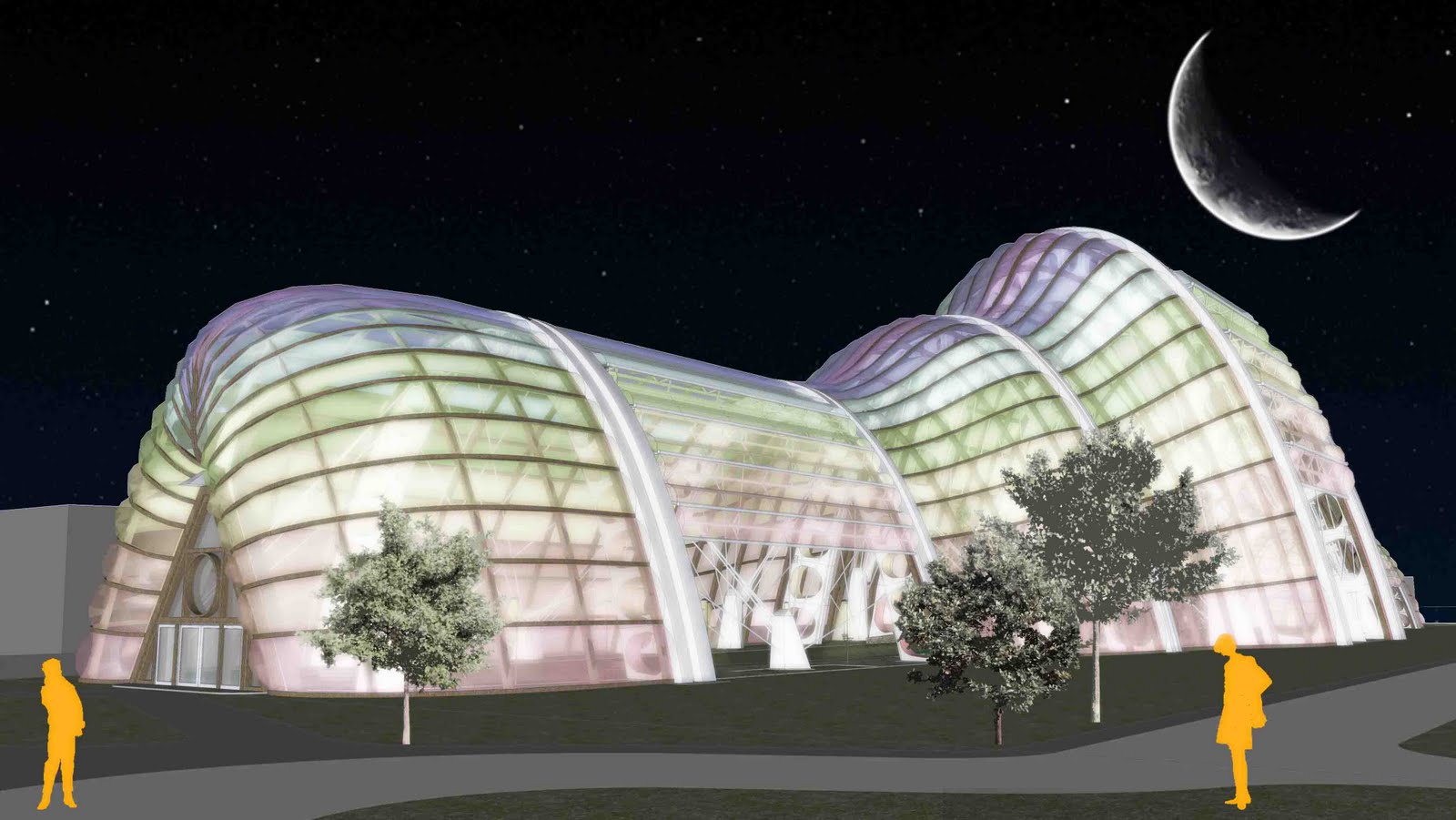An Interview with Nature's Apprentice (Igor Barteczko)
 Igor Barteczko joined the BID Community in November and agreed to be interviewed in early December. His portfolio at ARCHITEORYZM demonstrates his creativity and graphic sense. Igor is a natural biomimic who also understands the importance of human culture and engineering. Ultimately, we need viable solutions to human problems that help re-connect us with the natural systems that support our existence.
Igor Barteczko joined the BID Community in November and agreed to be interviewed in early December. His portfolio at ARCHITEORYZM demonstrates his creativity and graphic sense. Igor is a natural biomimic who also understands the importance of human culture and engineering. Ultimately, we need viable solutions to human problems that help re-connect us with the natural systems that support our existence.
Norbert: How did you get started in biomimicry/bio-inspired design?
Igor: I grew up on a 42 hectare ecological cattle ranch in Poland. As a small boy, I spent lots of time taking naps on grasslands, climbing the tallest tree canopies I could find, making holes in the frozen ice on the pond and doing anything my endless curiosity desired. My mother trusted my natural judgment and forward thinking abilities so I was free to do almost anything.
 The countryside was no stranger to me; I loved it from the start. I wondered why every time a Hereford cow gave birth my hands would go gentle and invigorated. I now realize that when I stroked the barely standing newborn calf, my hands were moisturized by the best cream out there: amniotic fluid which has regenerative stem cells. This was one of thousands such early helpful observations, the most important being that this local habitat fed, educated and sheltered me from the current state of civilization.
The countryside was no stranger to me; I loved it from the start. I wondered why every time a Hereford cow gave birth my hands would go gentle and invigorated. I now realize that when I stroked the barely standing newborn calf, my hands were moisturized by the best cream out there: amniotic fluid which has regenerative stem cells. This was one of thousands such early helpful observations, the most important being that this local habitat fed, educated and sheltered me from the current state of civilization.
I then moved to a different environment: London, a huge, noisy, polluted concrete, glass and steel jungle with lots of human problems anywhere you look. I found it difficult to cope with not being able to see the stars at night. But I quickly adapted and went to the Natural History Museum which was great because I also love dinosaurs!
I finished college and went to study architecture at Nottingham Trent University. Although a new course that was innovative and insightful, I rebelled often against the modernist machine and all associated ideologies. At the same time I felt powerless because I was not encouraged to play with nature.
My life changed when I won a competition for a memorial project which was inspired by the very thing which I was already nearly convinced was unpopular and stupid. It was a spiral design for a mausoleum made of dry stone walling and complicated in form which was well integrated with function. The progressive client liked it so much that he told me he wanted to build it.
I was planning a come back for my third year but could not figure out what to do when I heard Janine Benyus giving that incredible presentation at TED. I was so moved that I cried. I knew what I had to do next: research biomimicry in preparation for my final year.
Norbert: What are your thoughts on the current state of the field?
Igor: It is amazing how fast biomimicry is gaining converts: it is probably doubling every year. Less than three years ago I was the first in the UK to write a dissertation on biomimicry. Now I see many different young professionals getting bio-inspired. I believe it is all about hope: biomimicry gives people hope for a better future, a powerful driver for innovation.
Norbert: How have you developed your interested in biomimicry/bio-inspired design?
Igor: In my final year I was confident and strong, full of optimism because I was nature inspired and thanks to Janine Benyus I could now put a name to what I was doing. I began my work on a dissertation which looked closer at the role of nature inspired design over time.
All my projects were accepted and praised. My team designed the best affordable community housing project because the city council loved our appreciation for biodiversity, replacing taken greenery with intensive green roofing, designing a community united through allotments at its heart, much like a large family. Our team designed a cascading reed-bed system that acted as a reservoir and provided fresh water for the community. Many people learned in that project about biomimicry without knowing it.
My parabolic glulam arch pavilion, a technical project, was recognized for its beauty and simplicity by an inspirational engineer John Chilton. The pavilion was rooted in how the wood fibers align and what gives them the strength and flexibility when steamed and sculpted. The layout was inspired by the concept of Natural Assemblism: the instinctive quality with which humans perceive and determine a naturally ordered and psychologically pleasing spatial arrangement.
Biomimicry 3.8 is a great idea and I am planning to get trained as a university level educator in biomimicry to inspire others and get a truly global movement kicked off. I also know Polish and German and I am seriously thinking about establishing a bio inspired school in central Europe.
Norbert: What do you see as the biggest challenges in practicing biomimicry/bio-inspired design?
Igor: Current negotiations on a new environmental treaty in Durban, South Africa are not looking promising, which may hurt the community a little. The environmental movement was destined to fail from the start, but biomimicry is different and will cause a revolution.
More and more people are growing up in cities. A challenge for biomimicry is to make cities greener so more of us get inspired.
Norbert: What techniques have you found to be effective?
Igor: My approach is to keep searching and keeping an actively charged mind with naturized particles. I am constantly looking for opportunity where there is nothing happening but where I see a need. If viewed from the right angle, needs are what drives innovation forward. One type of need is meeting energy efficiency, resource and funding requirements. Equally important, another need is addressing aesthetic and psychological requirements. I also design bio-inspired art for fun, but when I do I come up with art which only pleases my psychological and sensual needs.
My most effective technique is to observe the need closely, analyze it from many points of view, then crossbreed potential solutions with one another. My brain does most of this when I sleep or go for a long run. I can then express the synthesis of the fittest elements of my vision.
Norbert: What should the BID Community be focusing on to advance the field?
Igor: It is important to focus on children’s education. Children are open and they love nature. We must give them the opportunity to meet nature face to face and develop a strong connection that they will never forget when they enter the grown up world. I would love to start a school based on the Aristotelian education system which rewards students for taking an interest in natural processes. Kids from the Amazon rain forest which are taught by their parents and nature itself to understand the forest cope better in life than those who went to conventional schools and return to the jungle.
Another thing is a greater focus on Europe. I see people here who could do great things if they had a little more support. Europe is a hub for multidisciplinary people.
Biomimicry should come to ECO BUILD in London. It is the perfect place to spread the word and gain funding. I have visited all exhibitions over the last three years since it began and momentum is growing. I have advertised biomimicry at ECO BUILD, giving out leaflets and speaking to professionals who were very fascinated. I am also going again in 2012.
Norbert: Do you have any closing thoughts for us?
Igor: I discovered that everyone cares about the environment at some profound level and therefore nature should always be at core of design process and lifestyle. But biomimics must also remember to be proud of being human and use common sense to come up with instinctive solutions that work because that too is part of being natural. It is what we feel within and it is about how those feelings shape our thoughts that matters most in biomimetic approach. It is about being true to one’s own natural convictions about what this Earth should be like. With this foundation, a world of endless possibilities opens when observing the natural world at work. It is about being in tune with this creative force, coexisting with it and not inventing something to replace it. The eureka moment strikes and the mind and stomach fizz with energy when one trusts and plays with this force within and all around.
It is about having a child-like mind but with tons of experience to choose from. AskNature is a candy store for me as a designer. All one needs to do is select a potential solution which fulfills a need, imagine it spatially in context inside the mind and then make it come alive. Being brought up by nature and have a strong connection with it can make the process easier compared to someone raised in the city.
I am hopeful about the future now that I have biomimicry at my side and so many people who share my views out there. I do not feel alone and I can hardly wait to design and build my biosphere!
Norbert: Igor, on behalf of the BID Community, thanks for taking the time to share your insights!
Image Credits:
- On Air: © frank peters - Fotolia.com
- cow and calf: Igor Barteczko
- Spiral Memorial Structure: Igor Barteczko
- Glulam Arch Pavilion: Igor Barteczko
- The Biosphere: Igor Barteczko

Igor Barteczko graduated in 2010 with a BArch from Nottingham Trent University. He aspires to become a practicing bioneer and architect, continually asking "How does this world work and how should I?"



